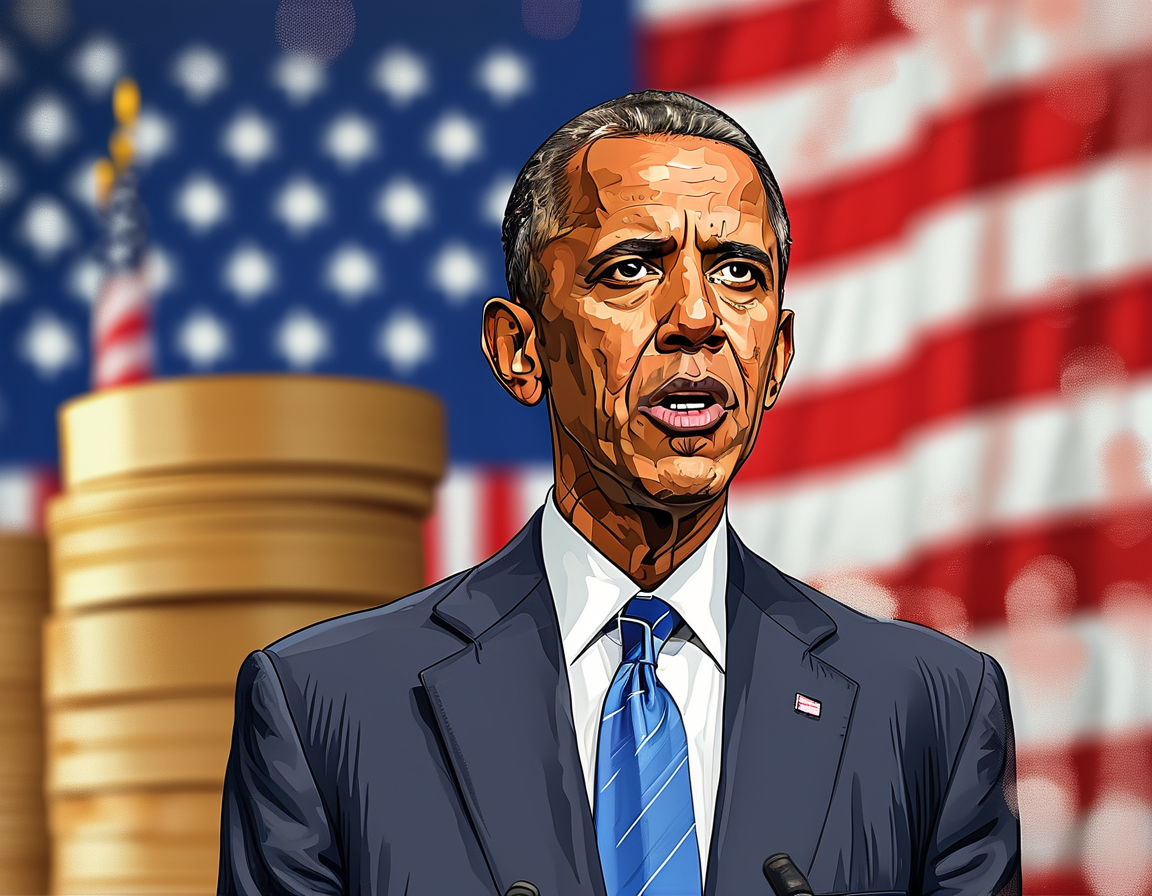
Former President Barack Obama recently weighed in on President Donald Trump’s controversial tariff plan, calling it a worrying sign for the nation’s economic future. Tariffs, like those being proposed, have profound implications that affect countless Americans.
The tariff plan, rolled out on what Trump called “Liberation Day,” has stirred significant debate. News reports mention a sweeping 10% tariff on all imports, targeting 60 countries deemed as the ‘worst offenders.’ From steel to electronics, the impacts of such tariffs can ricochet across the economy.
When Trump spoke from the Rose Garden, he seemed confident. He proclaimed, “We’ve been waiting for a long time.” But how long is too long? How many times can we hit the reset button on foreign trade without consequences?
Obama didn’t hold back in his critique. He shared his opinion at Hamilton College, expressing deep concern over this economic direction. His frank remark, “Imagine if I had done any of this?” lingered in the air, prompting many to reflect on the possible double standards at play.
The former president elaborated. He cautioned that such aggressive economic policies could have dire consequences. He said, “What we just witnessed in terms of economic policy and tariffs is not going to be good for America.” Why might he feel this way?
Central to this debate is the fear many develop around the economy. Tariffs can lead to price hikes, job losses, and strained relationships with trading partners. There’s a real fear that consumers will ultimately bear the brunt of these decisions.
Moreover, Trump hints that tariffs could encourage Americans to buy domestic goods. But will this strategy work? Is it realistic to expect instant changes in consumer behavior? In a world of global commerce, it might not be that simple.
Countries impacted by the tariff announcements have begun responding with their own levies on U.S. goods. The cycle of retaliation has begun. How long until we see the full impact?
Many may already feel the change. Imagine walking into a store, looking for a familiar product, only to find it priced higher than before. How frustrating would that be? Economic shifts affect everyday life in often unseen ways.
The White House’s stance is clear. The tariffs remain until the president feels the threat posed by trade deficits is mitigated. But how does one quantify that threat? Is it numerical, or is it a generalized sentiment?
And in the backdrop of all this, Obama raises a philosophical concern. He worries about protections of free speech and the rights of legal practitioners. It’s broader than just trade; it points to fundamental issues within our democracy.
So, while the tariff plan unfolds, many wonder what lies ahead for America. Will we embrace this bold path, or is it a risky venture? As citizens, we need to ask our leaders tough questions about their choices.
The future of U.S. trade isn’t just about numbers. It’s about livelihoods, values, and identity. As this situation develops, we should stay informed, engaged, and critical.
The layers of this debate show just how intertwined our economy is with global dynamics. Will we become more insular or open? With so many unknowns ahead, one thing is clear: it’s time for thoughtful discussions and decisions.
Leave a Comment